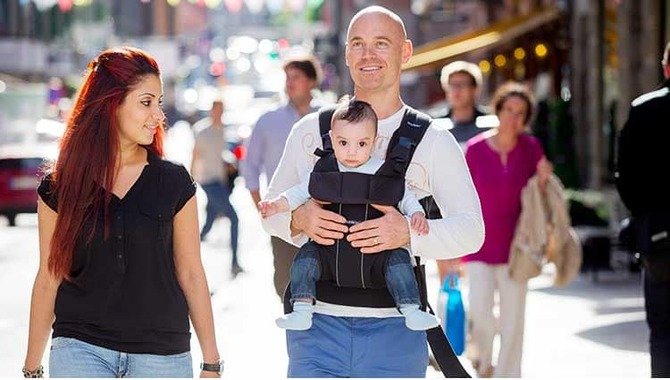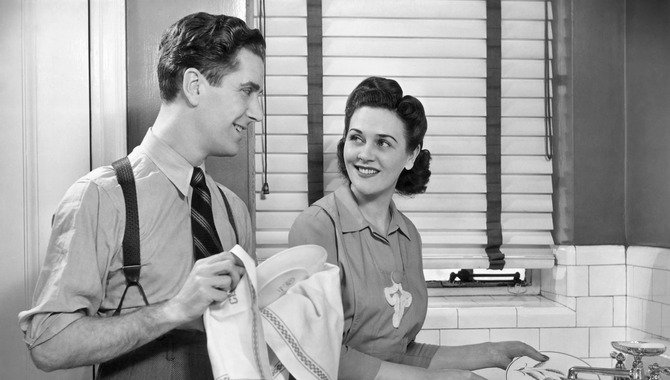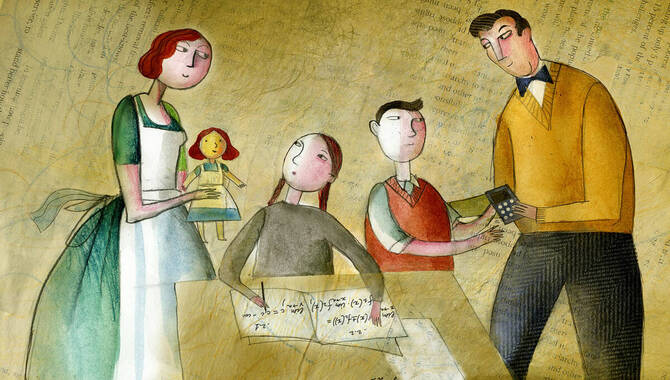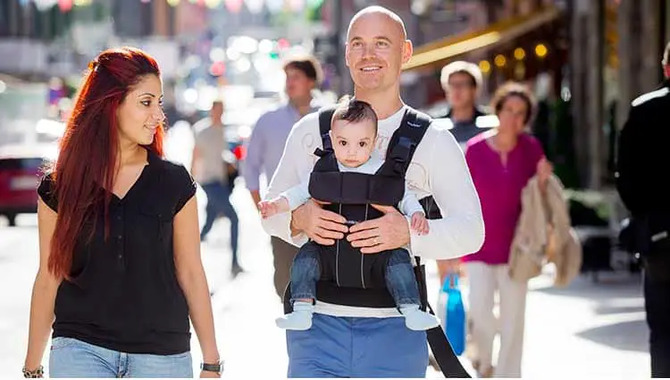The best way to navigate the expectations of traditional gender roles in relationships is to have an open and honest conversation with your partner about what each of you wants and expects from the relationship.
It’s no secret that traditional gender roles are still alive and well in many relationships. Whether it’s the man being the “breadwinner” or the woman being the “homemaker,” there are certain expectations that come along with these roles. And while there’s nothing wrong with any of these things in and of themselves, it can be difficult to navigate when your own expectations don’t line up with those of your partner.
If you’re in a relationship where traditional gender roles are the norm, it’s important to have an open and honest conversation with your partner about your own expectations. What do you want out of the relationship? What are your goals? What are your needs? If you don’t feel like you’re able to openly communicate these things with your partner, it may be time to reassess the relationship.
It’s also important to remember that you don’t have to conform to traditional gender roles if you don’t want to. If you want to be the breadwinner, go for it. If you want to be the one who stays home with the kids, go for it. The most important thing is that you and your partner are on the same page about what you both want out of the relationship.
Navigating the expectations of traditional gender roles in relationships can be difficult, but it’s important to remember that you don’t have to conform to them if you don’t want to. The most important thing is that you and your partner are on the

What Are Traditional Gender Roles In Relationships?

The traditional gender roles in relationships are that the man is the breadwinner and the woman is the homemaker.
What Are Traditional Gender Roles In Relationships?

In a traditional relationship, the man is the breadwinner and the head of the household, while the woman is the homemaker and the caretaker of the children. This traditional gender role division of labor often results in the man having more power and authority in the relationship than the woman.
However, these traditional gender roles are not set in stone, and there is a lot of flexibility in how couples can divide up their responsibilities. For example, some couples may choose to have the woman work outside the home while the man takes on more domestic responsibilities, or vice versa. There are also couples who choose to share all responsibilities equally.
The important thing is that couples should communicate openly about their expectations and division of labor in order to ensure that both partners are happy and fulfilled in the relationship.
How Do These Roles Impact The Way We Interact With Our Partner?

The roles we play in our relationships impact the way we interact with our partner by dictating the expectations we have for ourselves and for our partner.
We all know that communication is key in any relationship, but
What Happens When Our Roles Within The Relationship Are Unclear?

When our roles are undefined, it can lead to tension and conflict within the relationship. Here’s a look at how our roles can impact the way we interact with our partner.
In any relationship, there are typically two people who take on different roles. There is the initiator, who is the one who starts the conversations and brings up new ideas, and the responder, who reacts to the initiator’s ideas and provides feedback. While these roles can be fluid, they often dictate the way we interact with our partner.
For example, let’s say you’re the initiator in your relationship and you bring up the idea of going on a vacation. Your partner, who is the responder, may not be as enthusiastic about the idea as you are. This can lead to conflict if you’re not able to communicate effectively.
It’s important to remember that just because you have different roles in the relationship doesn’t mean that you’re not on the same team. It’s still important to communicate and collaborate with your partner, even if you don’t see eye to eye on everything.
Do You Have A Clear Understanding Of Your Role In Your Relationship?

If not, it might be time to have a conversation with your partner about it. Defining your roles can help to improve communication and prevent conflict.
What Happens When Our Own Expectations Do Not Align With Traditional Gender Roles?

When our expectations do not align with traditional gender roles, we may feel like we are not living up to societal expectations.
It’s no secret that gender roles have been a hot topic of discussion for quite some time now. Whether it’s the #MeToo movement, the fight for marriage equality, or the ongoing debate about which pronoun to use when referring to someone who identifies as non-binary, it’s clear that society is rethinking its long-held beliefs about what it means to be a man or a woman.
But
What Happens When Our Own Expectations Do Not Align With Traditional Gender Roles?

For many of us, it can be a confusing and frustrating experience. We may feel like we’re being forced into a box that doesn’t fit, or like we’re not living up to society’s expectations of what it means to be a man or a woman.
Here’s a real-life example:
Jill is a woman who has always considered herself to be a feminist. She believes in equal rights for all, and she’s never been afraid to speak her mind. When she got married, she and her husband decided that they would share all of the household duties equally. She would work outside the home, and he would stay home with the kids.
However, Jill’s family and friends were not supportive of her decision. They told her that she was being selfish, that she was putting her career ahead of her family, and that she was setting a bad example for her daughters.
Jill felt guilty and confused. She thought she was doing the right thing, but it seemed like everyone else thought she was doing the wrong thing.
Eventually, Jill realized that she was not going to be able to please everyone. She had to make the decision that was best for her and her family, even if it meant going against the norms of society.
Do You Have Your Own Story About Not Fitting Into Traditional Gender Roles?

We’d love to hear it in the comments!
How Can We Communicate Our Needs And Expectations To Our Partner?

One way to communicate needs and expectations to a partner is to express them directly.
In every relationship, communication is key. Whether you’re just starting to get to know someone or you’ve been together for years, being able to express your needs and expectations to your partner is essential for a healthy relationship.
But sometimes, it’s not always easy to communicate with the person you’re closest to. If you’re having trouble communicating your needs and expectations to your partner, here are a few tips to help you get started.
- Be clear and direct
When you’re communicating your needs and expectations to your partner, it’s important to be clear and direct. This means being specific about what you want or need, and why it’s important to you.
For example, instead of saying “I need more help around the house,” you could say “I would appreciate it if you could help me with the dishes more often.”
- Use “I” statements
When you’re communicating your needs and expectations to your partner, it’s important to use “I” statements. This means that you should focus on how you feel, rather than making accusations or putting the blame on your partner.
For example, instead of saying “You never help me with the housework,” you could say “I feel overwhelmed when I have to do all the housework by myself.”
- Avoid ultimatums
When you’re communicating your needs and expectations to your partner, it’s important to avoid ultimatums. This means that you shouldn’t threaten to leave the relationship if your needs aren’t met.
For example, instead of saying “If you don’t start helping me around the house, I’m going to leave,” you could say “I’d like us to discuss how we can both pitch in more around the house.”
- Be open to compromise
When you’re communicating your needs and expectations to your partner, it’s important to be open to compromise. This means that you should be willing to meet your partner halfway, and find a solution that works for both of you.
For example, instead of saying “I want you to do all the dishes,” you could say “I’ll do the dishes on weekdays if you do them on weekends.”
- Listen to your partner
When you’re communicating your needs and expectations to your partner, it’s important to listen to your partner. This means that you should try to understand their point of view, and be open to hearing their needs and expectations as well.
For example, instead of saying “I don’t want to do all the dishes,” you could say “I’m not comfortable
Doing all the dishes by Myself. Can We Figure Out A Way To share This chore?

Communicating your needs and expectations to your partner can be challenging, but it’s important for a healthy relationship. By following these tips, you can start to open up the lines of communication with your partner, and build a stronger, more fulfilling relationship.
FAQs:
1. How Can We Effectively Navigate Expectations Around Gender Roles In Our Relationships?
Ans. We can effectively navigate expectations around gender roles in our relationships by communicating with our partner about our individual needs and expectations. It is important to be honest and open with each other in order to create a mutually beneficial and satisfying relationship.
2. What Are The Implications Of Not Meeting Traditional Gender Roles In Relationships?
Ans. There are a few implications of not meeting traditional gender roles in relationships. First, it can create tension and conflict within the relationship. Second, it can lead to feelings of frustration and resentment, which can ultimately lead to the breakdown of the relationship.
Additionally, not meeting traditional gender roles can also affect how children are raised within the relationship, as traditional gender roles often dictate how parenting duties are divided.
3. How Can We Challenge Traditional Gender Roles In Our Relationships?
Ans. There are a few ways that we can challenge traditional gender roles in our relationships. For example, we can consciously choose to share domestic and child-rearing responsibilities equally. We can also make a point to communicate openly and honestly with our partner about our needs and expectations, without adhering to traditional gender roles or stereotypes.
Additionally, we can be intentional about creating mutually supportive and respectful relationships, where both partners feel like they can express their true selves. Ultimately, by challenging traditional gender roles, we can create more egalitarian and fulfilling relationships.
4. What Are The Benefits Of Breaking Traditional Gender Roles In Relationships?
Ans. There are a few benefits to breaking traditional gender roles in relationships. One benefit is that it can help to foster communication and understanding between partners. When couples break traditional gender roles, it forces them to communicate more openly about their needs and expectations.
This can lead to a stronger, more understanding relationship. Additionally, breaking traditional gender roles can also help to reduce stress levels within a relationship. When both partners share in domestic duties and responsibilities, it can help to take some of the pressure off of one person.
Finally, breaking traditional gender roles can also lead to a more satisfying and well-rounded relationship. When both partners feel like they are equally contributing to the relationship, it can help to create a sense of balance and satisfaction.
Conclusion
It can be difficult to navigate the expectations of traditional gender roles in relationships, but it is possible to do so successfully. With open communication and a willingness to compromise, you and your partner can figure out a way to make your relationship work for both of you.
If you have any questions about navigating traditional gender roles in relationships, feel free to comment below.

